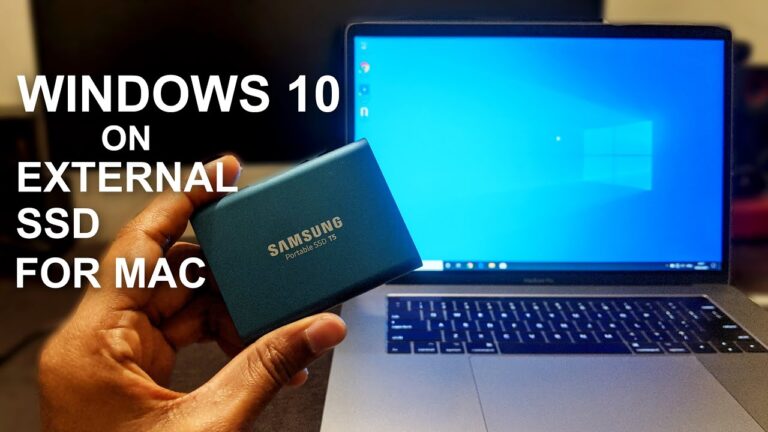Virtual Machine for Mac: Everything You Need to Know

In this article, we will explore the concept of virtual machines (VMs) and how they can be used on a Mac computer. We will discuss the benefits of using VMs, the different types of VM software available for Macs, and how to set up and use a VM on your Mac. Whether you’re a developer, a power user, or someone who just needs to run Windows software on their Mac, this article has got you covered.
What is a Virtual Machine?
A virtual machine is a software emulation of a physical computer, running an operating system (OS) and applications within a self-contained environment. This allows you to run multiple OSes on a single physical computer, without needing to install the OS natively. VMs are often used for testing, development, and running software that is not compatible with the host OS.
Benefits of Using a Virtual Machine
There are several benefits to using a virtual machine on your Mac. Here are some of the most significant advantages:
- Compatibility: With a VM, you can run software that is not compatible with the host OS. For example, you can run Windows software on a Mac using a VM.
- Isolation: A VM runs within a self-contained environment, which means that any changes made within the VM do not affect the host OS. This makes it easy to test new software or configurations without risking damage to your primary OS.
- Flexibility: You can easily switch between multiple OSes on a single computer, without needing to reboot or use separate physical machines.
- Resource management: A VM allows you to allocate specific resources to the virtual machine, such as CPU, RAM, and storage. This ensures that the VM performs optimally, without affecting the performance of the host OS.
Types of Virtual Machine Software for Mac
There are several virtual machine software options available for Mac users. Here are some of the most popular ones:
1. Parallels Desktop
Parallels Desktop is a virtualization software that allows you to run Windows and other operating systems on your Mac. It is easy to use and comes with a range of features, such as seamless integration between the host and guest OS, and support for DirectX and OpenGL graphics.
2. VMware Fusion
VMware Fusion is another popular virtualization software for Macs. It offers similar features to Parallels Desktop, such as support for multiple OSes and seamless integration between the host and guest OS.
3. VirtualBox
VirtualBox is a free and open-source virtualization software that can be used on Macs. It is not as user-friendly as Parallels Desktop or VMware Fusion, but it offers a range of features, such as support for snapshots, which allow you to save the current state of the VM and revert to it later.
How to Set Up a Virtual Machine on Your Mac
Setting up a virtual machine on your Mac is relatively straightforward. Here are the steps you need to follow:
- Choose a virtual machine software and download it.
- Install the software on your Mac.
- Create a new VM and select the operating system you want to install.
- Allocate resources to the VM, such as CPU, RAM, and storage.
- Install the OS and any applications you need within the VM.
- Configure any necessary settings, such as networking and sharing.
Best Practices for Using a Virtual Machine
Here are some best practices to keep in mind when using a virtual machine:
- Allocate enough resources: Make sure you allocate enough resources to the VM to ensure optimal performance. This includes CPU, RAM, and storage.
- Take snapshots: Take regular snapshots of the VM so that you can easily revert previous state if something goes wrong.
- Keep your VM updated: Make sure you keep your VM updated with the latest software updates and security patches.
- Use antivirus software: Install antivirus software on the VM to protect it from viruses and malware.
- Backup your VM: Regularly backup your VM to ensure that you don’t lose any important data in case of a system failure.
Frequently Asked Questions (FAQs)
Is it legal to run Windows on a Mac using a virtual machine?
Yes, it is legal to run Windows on a Mac using a virtual machine as long as you have a valid Windows license.
Can I run multiple virtual machines on my Mac?
Yes, you can run multiple virtual machines on your Mac, as long as your hardware can handle the load.
Can I install macOS on a virtual machine?
Yes, you can install macOS on a virtual machine, but only if you’re running it on a Mac.
Can I run a virtual machine on a MacBook Air?
Yes, you can run a virtual machine on a MacBook Air, but you may experience performance issues if your hardware is not powerful enough.
Can I use a virtual machine to test different versions of an operating system?
Yes, you can use a virtual machine to test different versions of an operating system, as long as you have the necessary resources to do so.
Conclusion
Using a virtual machine on your Mac can offer a range of benefits, such as compatibility with different operating systems, isolation, flexibility, and resource management. There are several virtual machine software options available for Macs, including Parallels Desktop, VMware Fusion, and VirtualBox. Setting up a virtual machine on your Mac is relatively straightforward, and following best practices such as allocating enough resources, taking snapshots, keeping your VM updated, using antivirus software, and backing up your VM can help ensure optimal performance and protection of your data.





